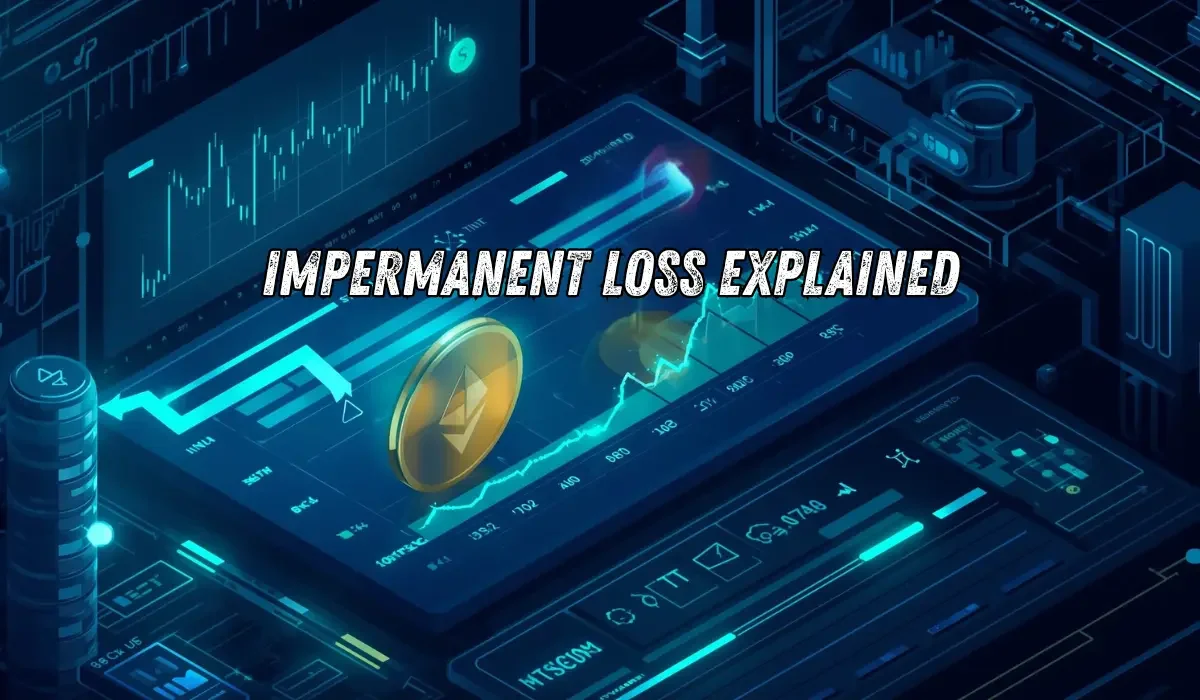What Is an Automated Market Maker (AMM)?

We are all familiar with the ever-evolving cryptocurrency market, which is renowned for its volatility and unpredictability. Once it was introduced to the world, it garnered significant attention from traders and investors worldwide. Due to its volatile nature, many investors have started using tools to make informed investment decisions. One such tool that investors utilize is the Automated Market Maker (AMM), and this article is designed to provide different details about AMM.
What is the Automated Market Maker (AMM)?
Automated Market Makers are decentralized exchanges (DEX) that use algorithmic bots to facilitate the trading of digital assets, allowing users to easily purchase and sell crypto assets. To provide liquidity in the DeFi ecosystem, AMMs rely on liquidity pools and not buyers and sellers.
Users supply crypto tokens to these liquidity pools, with the prices determined by a constant mathematical formula. By providing deep liquidity, AMM-based DEXs have garnered significant attention among investors and traders.
What are Liquidity Pools?
Liquidity pools are a collection of digital assets, mostly cryptocurrencies, that are locked in a smart contract, usually in pairs, with the intent of providing liquidity for decentralized applications, such as decentralized exchanges (DEX).
Who are Liquidity Providers?
Liquidity providers are users of AMMs who deposit their holdings into a liquidity pool for seamless trading. As a reward for providing liquidity, these liquidity providers earn a share of the trading fees generated within the pool.
How Do AMMs Work?
As mentioned above, AMMs operate with liquidity pools filled with cryptocurrencies supplied by users to provide liquidity. Using algorithms, AMMs determine token prices based on the asset ratios in the pool. Users can swap one token for another token directly through the AMM if they wish to trade. The trade prices are determined by the pool’s algorithm, allowing AMMs to have continuous liquidity for a wide range of crypto assets.
Pros and Cons of AMMs
Due to the extensive advantages provided by AMMs, several users are trading with the help of this tool. Let’s have a look at some of the advantages and disadvantages provided by AMMs:
Pros (Advantages)
- Open to Anyone: AMMs can be used by anyone, seamlessly allowing traders to provide liquidity.
- Operates 24/7: Traders can use this tool anytime and anywhere, potentially allowing global trading without any time limit.
- Decentralized and Permissionless: AMMs do not have a central authority to control them, eliminating the need for an intermediary to execute trades.
- Low Entry Barriers: There are no initial obstacles in using AMMs, allowing new users to access them with ease.
Cons
- Prone to Impermanent Loss: In order to maintain a certain ratio between assets, AMMs automatically rebalance the pool, shifting the prices of your holdings.
- Limited Risk Management Tools: AMMs do not have many risk management tools, which could pose a significant challenge for new traders.
- Vulnerable to Smart Contract Security Risks: AMMs are vulnerable to smart contract security risks, such as reentrancy attacks and Denial of Service (DoS).
- Prone to Slippage: Users can experience slippage, especially at times of large trades or low liquidity.
Types of AMMs
There are multiple variations of AMMs, each carrying its unique features, which makes them suitable for different trading environments within the DeFi ecosystem:
- Constant Product Market Maker:
The Constant Product Market Maker (CPMM) is mainly used to trade between any two crypto assets. This model is suitable for volatile asset pairs, as it maintains liquidity across a wide range of prices, meaning it’s less suited for assets with low price variance.
- Hybrid Market Maker:
Combining the features of both AMMs and traditional order book systems, Hybrid Market Makers aim to reduce impermanent loss and slippage of assets with high volatility.
- Stable Swap AMMs:
Stable Swap AMMs are mainly used by traders when they want to trade with similar values, such as stablecoins, minimizing the slippage when trading between pairs that maintain a close price relationship.
- Dynamic AMMs:
This model of Automated AMarket Maker utilizes Chainlink Price Feeds and implied volatility to dynamically distribute liquidity along the price curve. Dynamic AMMs can create a robust market maker by integrating several dynamic variables into their algorithm.
- Proactive Market Maker:
To increase liquidity, Proactive Market Maker mimics the human market-making manners of a traditional central limit order book. Also utilizing Chainlink Price Feed, this model proactively moves the price curve of each asset in response to market changes.
Well-Known AMMs
Some of the most popular AMMs in the DeFi ecosystem are:
- Uniswap
- PancakeSwap
- Balancer
- Curve Finance
- Kyber Network
Final Thoughts
Decentralized exchanges that use algorithmic bots to provide liquidity to users for their trades are called AMMs. By utilising algorithmically controlled liquidity pools that are filled with crypto assets, they facilitate trading. Traders who are looking for an easy trade can use AMMs as a tool to make a profit. However, even AMMs come with their risks; therefore, it is crucial to do the required diligence before trading to avoid financial losses.
Crypto & Blockchain Expert




